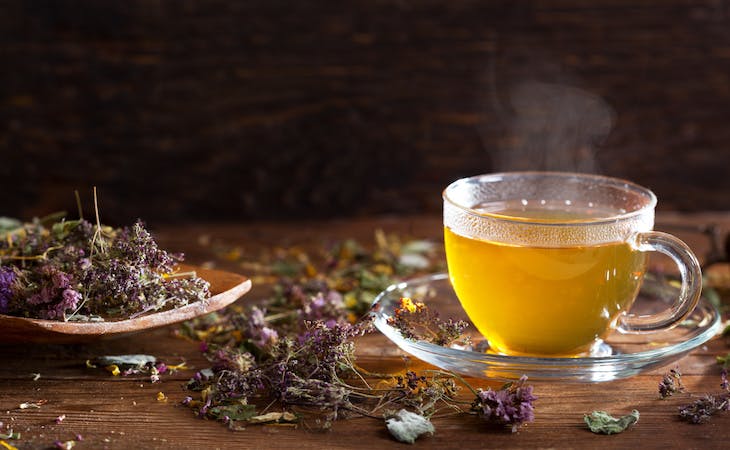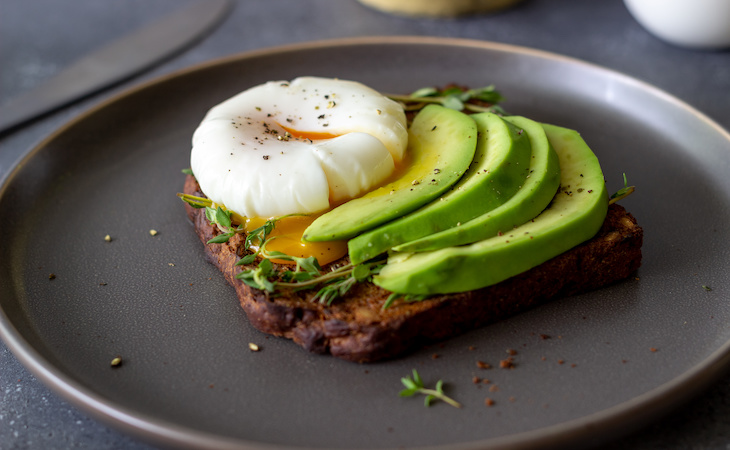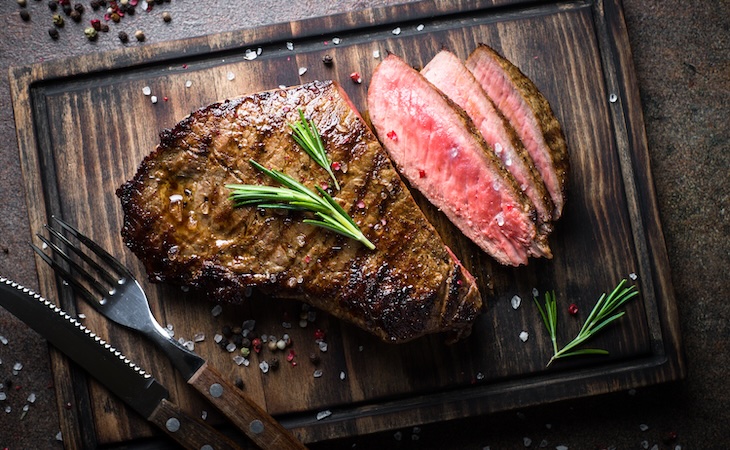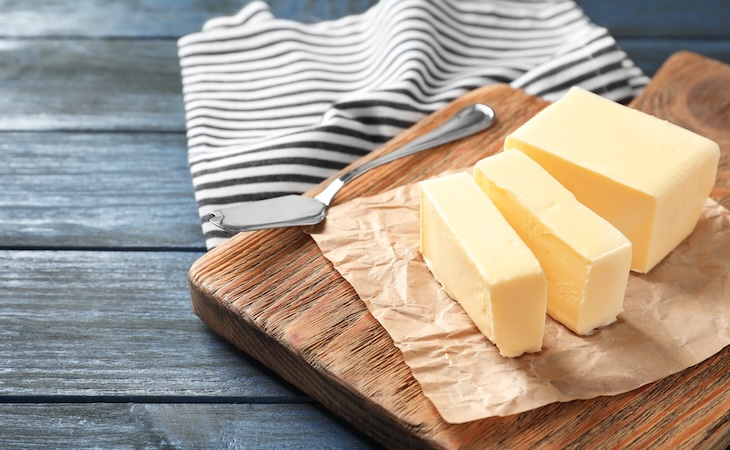With so many types of tea out there, knowing which ones to drink—and when to drink them—can seem like a daunting task. But with some basic tea info and a few simple tips, you can optimize your tea drinking so it doesn’t keep you awake at night.
We’ve put together this beginner’s guide to drinking tea to help you find the perfect beverage for any time of day.
Types of tea
There are four main types of traditional caffeinated tea: black, white, green, and oolong. All caffeinated tea comes from two varieties of the same plant, an evergreen shrub native to Asia, called Camellia sinensis.
The sinensis (Chinese tea) variety is native to China and is used to create green and white teas. It thrives in cool temperatures and high elevations and grows commonly on mountain slopes. It produces a sweeter, milder taste associated with green and white teas.
The assamica (Assam or Indian tea) variety is native to the Assam region in northern India. It has bigger leaves and thrives in rainy, warm temperatures. It’s used to create black and oolong teas, which have a stronger, more robust flavor.
Young leaves are harvested by hand and processed in a myriad of ways to create black, oolong, green, and white teas. The variations in color, flavor, aroma, and levels of both caffeine and antioxidants are achieved by climate, harvest, oxidation, fermentation, and aging.
If this seems like a lot of info to navigate just to pick out your favorite brew, here is a very simplified rule of thumb—the darker the tea the more caffeine and strong flavor, the lighter the tea the more antioxidants and delicate taste.
Related: 6 ways caffeine can disrupt your sleep
Black tea
Made with fermented leaves, black teas are robust and have the highest caffeine content. Popular varieties like English Breakfast, Earl Grey, and Chai have black tea as their base. And many black teas have enough flavor to stand up to milk if so you desire.
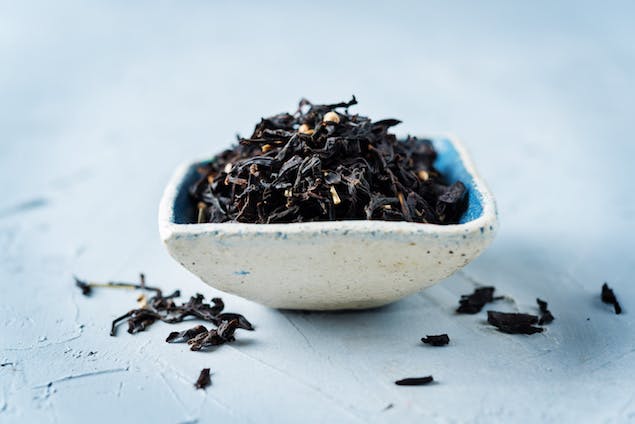
While common, black teas can still be special. Pu-erh is a wonderful variety of black tea from the Yunnan province of China that has been fermented, compressed into cakes, and aged. This aging process gives Pu-erh a smooth, dark, and rich flavor that will continue to change as you chip away at the cake over time.
Oolong tea
While not as common in the U.S. as green or black varieties, oolong teas are highly versatile and vast. Oolong teas have been partially fermented and roasted but that’s putting it very simply—the leaves are often manipulated by bruising, tossing, twisting, or rolling.
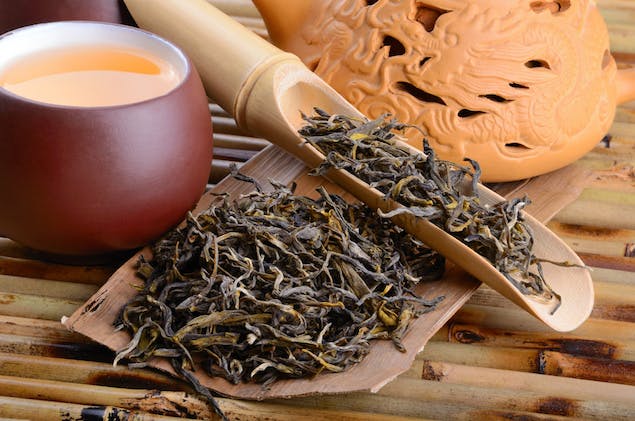
Those methods of processing create a flavor that varies from bright and fresh, like Jade oolongs, to dark and nutty with notes of chocolate or honey.
Green tea
Green tea has picked up in popularity in the U.S. over the last 30 years, often touted for its positive health effects and antioxidant content. Green tea is often roasted or steamed after harvesting to halt the oxidation process. This preserves antioxidants, flavonoids, and the familiar fresh, vegetal notes. But like oolong, there is a wide spectrum of flavor and body.
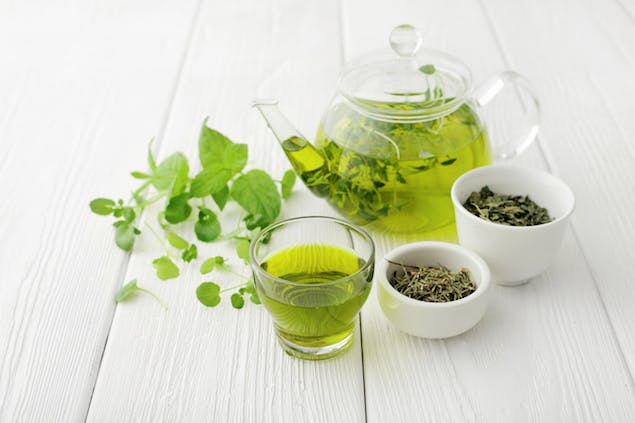
Green teas can run the gamut from bright and grassy to soft, fruity, and naturally sweet and contain less caffeine than black teas. (Find out if matcha is good for sleep.)
White tea
The least processed of all teas, white teas are neither fermented nor roasted and are barely oxidized at all, leaving their antioxidants and polyphenols largely intact.
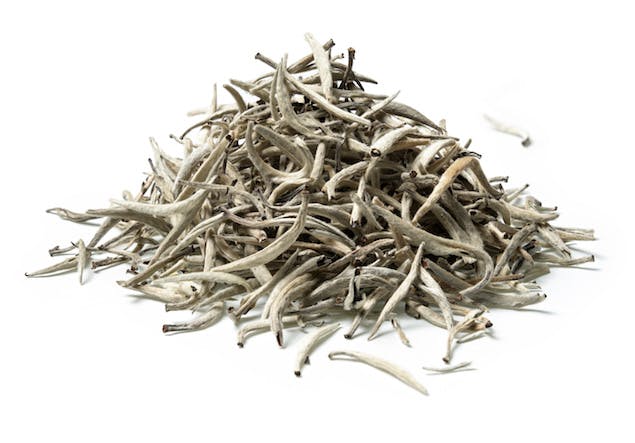
White teas often have a silvery fuzz still on the leaves from their delicate handling and should also be treated gently when brewing with a lower temperature of water. White teas are naturally lower in caffeine than other types of tea.
Key health benefits of tea
Tea has many well-documented health benefits thanks to its antioxidant content. As a review of studies published in Current Pharmaceutical Design notes, catechins and theaflavins, the main antioxidants found in green and black teas, can help protect against diseases like cancer, diabetes, and heart disease.
EGCG, a specific type of catechin primarily found in green tea, has the most promising benefits. Research finds that EGCG may have the ability to reduce inflammation, lower blood pressure and cholesterol, promote weight loss, and prevent degenerative brain diseases like Alzheimer’s.
Tea drinking can also be a healthful part of your daily routine from a mental aspect. For starters, one study shows that black tea, in particular, helps lower cortisol, the stress hormone.
Plus, drinking hot tea forces you to slow down and can be a great mindfulness break no matter what time of day—and the ritual of preparing and brewing loose teas can be just as relaxing as sitting down with a cup.
Best teas for any time of day
This beginner’s guide will help you develop the tea time routine that works best for you from morning to night.
Best teas to drink in the morning
Black teas contain the most caffeine, making them a great option for starting the day.
A few to try: Ancient Pu’er Tuo Cha is a traditional style pu-erh that’s smooth and robust with notes of mocha. Marco Polo is a popular black tea by French teahouse Mariage Freres that’s pleasantly fruity and rich. Tipu’s Slow Brew Masala Chai is made with Assam tea and traditional warming spices, wonderful with milk and honey.
Best teas to drink in the afternoon
Containing a moderate amount of caffeine, oolong teas are excellent as a mid-morning or early afternoon pick-me-up.
A few to try: Iron Goddess of Mercy or Tieguanyin is a smooth oolong with subtle apricot notes. Drunken Begonia is from the Fujian Province of China with notes of sweet cherry and black sesame.
Lighter in caffeine than black tea, green tea is also wonderful in the early afternoon when you have a little extra time to brew it and enjoy it.
A few to try: Genmaicha is a lovely Japanese tea with roasted rice and a slightly nutty, grassy flavor. Jasmine pearl is a green tea that’s been rolled into small balls and infused with fresh jasmine flowers, its flavor is sweet and beautifully floral.
Best teas to drink in the early evening
Because they’re naturally lower in caffeine, white teas can be enjoyed in the afternoon or early evening if you’re not caffeine sensitive.
A few to try: Song Tea Gold Peony is bright and fresh with notes of rice milk, jasmine, and cucumber. Silver Needles is a precious white tea with natural sweetness and a nectar-like aroma.
Best teas to drink at night for better sleep
While not technically tea, herbal teas or tisanes can be just as delicious and enjoyed any time of day. Ranging from traditional brews with medicinal properties to tasty blends of dried fruits, citrus zest, flowers, and herbs, tisanes can be a great wind-down ritual at the end of the night since they’re free of caffeine. Chamomile, valerian, passionflower, and lavender are classic bedtime brews.
A few to try: This Bedtime Blend has calming herbs like lemon balm, oatstraw, and lavender. Steep Echo Repose is a relaxing blend of olive leaf, chamomile, and rose. Golden Chamomile has notes of apple and honey and is a great nighttime tisane for the purist.
You can also make your own nighttime tisanes with ingredients you may already have in your kitchen (or garden). Mint, lemon peel, and ginger make refreshing after-dinner tisanes that both clear the palate and reportedly aid digestion.
Related: How a glass of water can improve your sleep
How to brew tea
The best way to brew tea is by using a tea kettle and fresh, cold water. For black tea, heat water to a rolling boil. For green and white teas, turn off the heat before the water boils to preserve their delicate flavors.
Use one teaspoon of tea or herbs or one teabag per 8-ounce cup. If you’re using loose leaf tea, put it in an infuser before placing it in your cup. Pour the water over the tea and let the tea steep.
Most full-leaf teas take a few minutes to steep, while teabags take less time. In general, white and green teas take less time to steep, while black and oolong teas take longer.
Read The Tea Republic’s step-by-step guide to brewing tea for more advice on making the perfect cup.
Common questions about tea
It’s time to step up your tea game. We’ve got answers to all your burning questions about tea.
What is the tea plant called?
All tea comes from two varieties of the same plant, Camellia sinensis, an evergreen shrub native to Asia. Green and white teas are derived from the sinensis (Chinese tea) variety of the plant, while black and oolong teas come from the assamica (Assam or Indian tea) variety of the plant.
What are the different types of tea?
There are four main types of tea: black, oolong, green, and white. Black tea has the most robust flavor and the highest caffeine content. Oolong tea can taste bright and fresh or dark and nutty depending on the variety and has a moderate amount of caffeine.
Green tea also runs the gamut on flavor and can taste bright and grassy or naturally sweet. It has less caffeine than black tea. White tea is the least processed and has the most delicate taste. It also has the least caffeine.
Does tea contain caffeine?
True teas—black, oolong, green, and white—all have caffeine. See below for the breakdown of the average caffeine content in each type of tea:
- Black tea: 40-100 mg per cup
- Oolong tea: 9-50 mg per cup
- Green tea: 8-30 mg per cup
- White tea: 6-20 mg per cup
Herbal teas, or tisanes, are not technically teas but are nonetheless still delicious. Herbal teas don’t contain any caffeine, so they make an ideal pre-bedtime drink. Popular herbal teas include chamomile, valerian, passionflower, and lavender.
Is tea good for health?
Studies show tea has a plethora of health benefits. Tea is full of antioxidants, like catechins and theaflavins. These antioxidants help protect the body against cancer, diabetes, and heart disease.
EGCG, a catechin in green tea, has further health benefits. Research finds it does everything from curb inflammation to reduce blood pressure to aid in weight loss to protect the brain from degenerative diseases.
FAQs
How long before bed can I drink tea?
True teas—such as black oolong, green, and white—all have caffeine, so you should drink these eight to nine hours before bed to prevent the caffeine from affecting your ability to fall asleep. Herbal teas, including chamomile, valerian, passionflower, and lavender, don’t contain any caffeine, so they make an ideal pre-bedtime drink. Drink these one to two hours before your bedtime to give your body time to wind down and get sleepy.
What’s the top recommended tea for helping with sleep?
Chamomile, valerian, passionflower, and lavender are classic bedtime brews that can help you sleep better. Ranging from traditional brews with medicinal properties to tasty blends of dried fruits, citrus zest, flowers, and herbs, these teas and tisanes can be a great wind-down ritual at the end of the night since they’re free of caffeine.
Which drinks are best enjoyed before bed? Here are the top drinks that help you sleep better.

